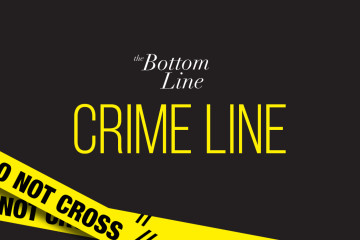In Defense of Disney: Revisit Classic Magic
It’s no secret that the Walt Disney Company (WDC) is an unabashed bastion of American capitalism. The media empire seems to have imperialistic aspirations within the industry, especially considering the last decade of deals including the purchasing of both Lucasfilms and Marvel Studios, as well as a significant deal with fellow media giant, Netflix. ABC, ESPN, Miramax, and other subsidiaries and holdings allow Disney an inordinate amount of influence and power within the American (and global) media market. But what happens when you combine the vast resources of such a behemoth with the art, tradition, and nostalgia of a rich catalog of family films? Magic happens.
A look at the history of the Walt Disney Pictures division of the WDC shows a steady diversification of the company’s portfolio. Once a fledgling animation studio in the early 20th Century, the company now boasts theme parks, merchandise, live-action film divisions, luxury travel, and more. More than any other media brand, the WDC enjoys name and brand recognition both generations and the world over.
Much of this may be attributed to the bedrock of the company: the classic animated films of the 20th Century that made Walt Disney a household name. Since Snow White took her extended nap in 1937, the animation studio has churned out feature films with typical success, barring slumps in the 1980’s and early 2000’s. Potentially none of these animated features have achieved the acclaim and success of 1991’s Beauty and the Beast.
Consequently, the 2017 live-action adaptation of Beauty and the Beast arrived under both high anticipation and high scrutiny. The WDC’s recent nostalgia for its own animated classics has resulted in a myriad of live-action adaptations often starring some of the biggest names in Hollywood today. This trend has been met with criticism and praise, but signs within the industry have indicated the coming of such a strategy for some time.
The Disney animated catalog is rife with musicals. In fact, many of Walt Disney’s classics have made their way to Broadway through stage adaptations (The Lion King, Mary Poppins, The Little Mermaid, Aladdin, and yes, Beauty and the Beast). The movie musical, a staple of Hollywood from the 1930’s through the 1960’s, has seen a resurgence in popularity in the new millennia, largely accredited to the success of Chicago, the first movie musical to win the Best Picture Oscar since West Side Story in 1962. Consider Chicago alongside the film adaptions of Moulin Rouge, Mama Mia!, Into the Woods, Dreamgirls, Les Miserables, Hairspray, Sweeney Todd, La La Land, and more. Consider even, if you like, the renewed interest in live television musicals like 2013’s The Sound of Music, 2014’s Peter Pan Live!, 2015’s The Wiz Live!, and 2016’s Grease Live!. Granted, these live ventures have been met with mixed results, but their presence indicates a market for the musical both in television and film.
With the Disney vault containing some of the most popular musicals of the last century, why shouldn’t the studio revisit some of these successes in attempts to capitalize off the the renewed fondness for the movie musical?
A roadblock to the adaptation of many Disney classics, however, has been technology. Animation allowed the studio to create and engage characters and scenes that were previously thought to never occur in live action film. How would one film a talking clock or even a Brave Little Toaster? Again, the winds of change have been present. One only needs to look to James Cameron’s Avatar (2009) as an example of how far digitally-rendered characters have come. Love Avatar or hate it, the film is the highest-grossing film of all time, having made over two billion (that’s billion with a “b”) dollars. CGI technology has ushered in a new hybrid of – quote – “animation” – end quote – skillfully disguised as leaping from the camera. In other words, with a renewed interest in a genre Disney has consistently excelled at, and with a newfound ability to adapt this genre for a new generation, the live-adaptation fever has been steadily brewing.
Yet Beauty and the Beast is only the most recent of such ventures. See the wildly successful The Jungle Book (2016), the technicolor Cinderella (2015), the Burton Alice in Wonderland (2010), the Wicked rip-off Maleficent (2014), and even Glenn Close’s iconic Cruella DeVil in 1996’s 101 Dalmatians.
The obvious motivation to revisit these classic films for new (and familiar) audiences is profit. Alice in Wonderland (2010) alone made over one billion dollars globally. Beauty and the Beast is gaining on Alice with a hefty $700 million already earned globally in only 18 days. With a budget of only $160 million, the film has already paid for itself and four other similarly-budgeted adaptations. The math makes the live-action strategy easy. Critics may argue that such a strategy is greedy, even lazy. Similar arguments were levied against Avatar for all its Dances With Wolves parallels. But the numbers don’t lie, and the audiences seem to keep turning out for the films they know and love, a little shinier and a little brighter than how they remember them.
Further adaptations of Disney classics remain in the studio’s lineup, including Dumbo, The Lion King, The Little Mermaid, Aladdin, and Mulan. Mary Poppins is set to receive a sequel starring Into the Wood’s darling Emily Blunt and the man behind both Hamilton and Moana, Lin-Manuel Miranda. Whether these films continue to remain successful sources of funding and entertainment remains to be seen, but if the efforts of the team behind Beauty and the Beast are indicators of what’s to come, then we may be in store for a new kind of Disney Renaissance. One in which Disney reasserts its relevance as a storyteller and reaffirms its dominance as a marketing and industry giant.
Imagery in Featured Image ©Disney


